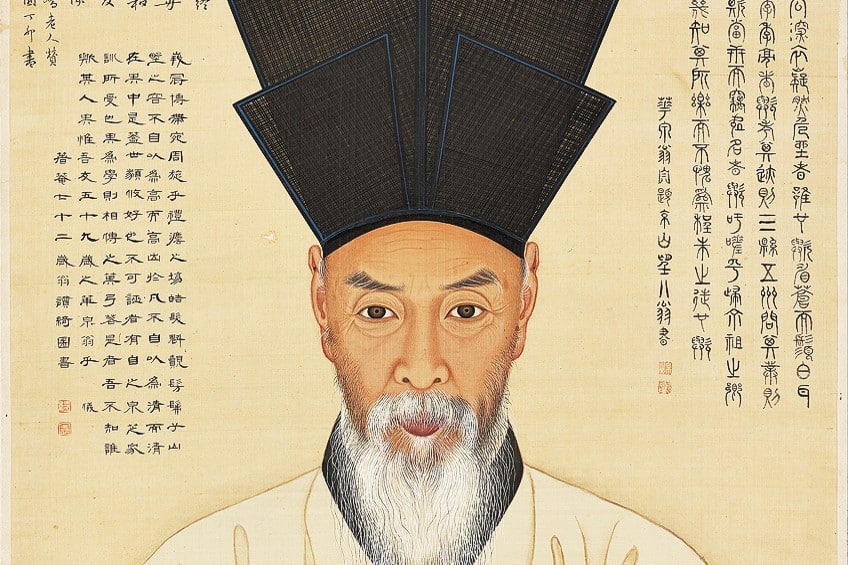Korean Art – Exploring the History of Traditional Korean Art
From pottery to calligraphy and painting, Korean art has provided some of the richest and most captivating artworks in global art history. Many art styles emerged from the different kingdoms and dynasties of Korea and even drew inspiration from Chinese traditions. This article will introduce you to all you need to know about Korean art history and includes an overview of traditional Korean art from different periods as well as some of the most famous examples of modern Korean art.
An Introduction to Korean Art History
The Korean arts have for centuries been intertwined with cultural practices and a strong emphasis on pottery, music, painting, calligraphy, and decor. The first art forms from Korea date back to 3000 BC, during the Stone Age, and include early examples of votive sculptures and petroglyphs. Between 918 and 1392 BC, the Goryeo Dynasty became a marker in Korean history for the development of beautiful pottery works.
The modern era of the Korean art hub is based in Insadong, Seoul, which is situated in South Korea and contains more than 50 galleries and fine art auctioneers.
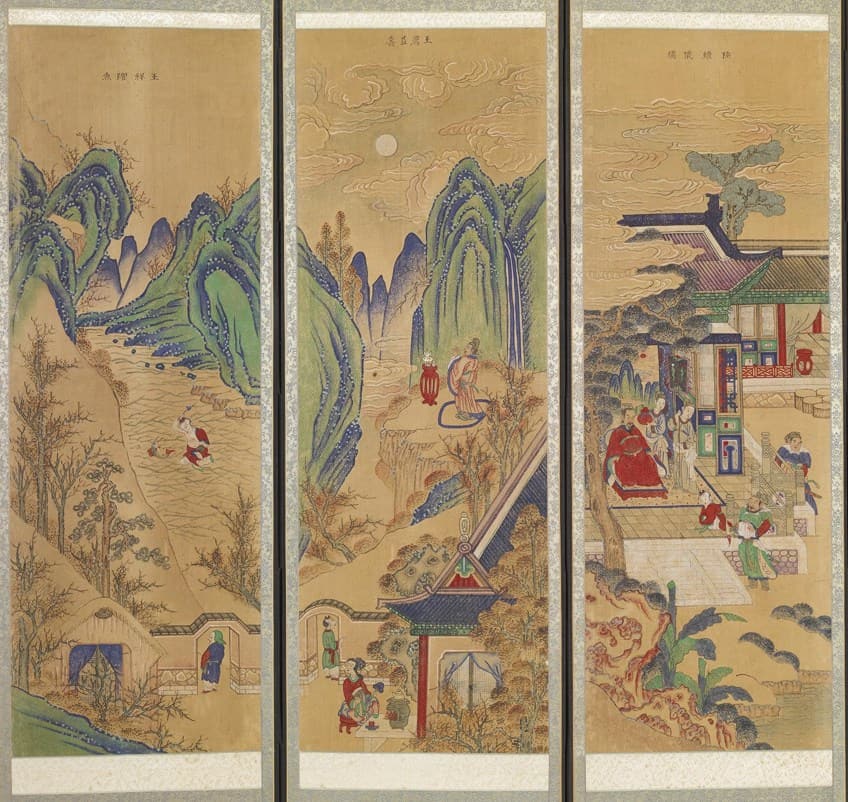
Many historians frame Korean art as emerging through the transmutation and integration of Chinese traditions and culture with Korean culture, which became an art form on its own. Korea is known as a peninsula region in East Asia and since 1945, it has been separated into two regions; North Korea and South Korea. Korea as a whole is made up of the peninsula region, Jeju Island, and seven other minor islands nearby.
Human occupation began in these areas approximately 50,000 years ago with early artworks being dated back to 7000 BC.
The Korean Traditional Arts
The Korean traditional arts consist of music, calligraphy, painting, pottery, and Korean crafts. Understanding the different periods may seem confusing to the Western art student but it is crucial to identify the different periods and what forms of Korean art were associated with them.
Below, you will find a table that provides a summary of the different time periods/dynasties of ancient Korea in reference to the traditional arts and the artworks that are discussed below.
As noted from the table, Korea has always been a site of incredible and rapid political change and adaptation of culture over time to the culture of the North and South we see today. Below, we will examine each of the different Korean traditional arts of ancient Korea that have left behind a rich source of potential for study and admiration.
| Time Period/Dynasty | Dates |
| Neolithic Era | c. 8000 – 1500 BC |
| Bronze Age | c. 10/15th – 4th century BC |
| Iron Age | c. 4th – 300 AD |
| Goguryeo | c. 37 BC – 668 AD |
| Baekje (Paekche) | c. 18 BC – 660 AD |
| Silla | c. 57 BC – 935 AD |
| Gaya Confederacy | c. 42 – 532 AD |
| North South States (Unified Silla & Balhae) | c. 698 – 926 AD |
| Goryeo | c. 918 AD – 1392 |
| The Great Joseon | c. 1392 – 1897 |
Gugak
Gugak refers to the traditional music of Korea used in songs, dances, and ceremonies. Music, as an art form, became a serious area of study under the Joseon dynasty around the 15th century. The term was first used by a government agency called Jangagwon in the late Joseon era, which oversaw music and the differentiation of Korean music from foreign music.
Music then progressed into a system and resulted in the emergence of Asia’s first mensural notation system – jeongganbo.
This also resulted in the development of ritual music known as Jongmyo Jeryeak, which was only performed during royal ancestral ceremonies and is documented on the 2001 Representative List of the Intangible Cultural Heritage of Humanity by UNESCO. There are many types of Korean traditional music used for different purposes and in connection with Buddhist and shamanic practices.
The instruments used for Gugak are diverse and include wind instruments, stringed instruments, and percussion instruments.
Folk Dancing
Folk dancing is another traditional art form in Korea that is also quite diverse in its function. One such folk dance called the mask dance (talchum) and pungmul nori are aimed at providing satire through dance and music as a commentary on the corrupt elite of the Joseon period and their connections with rural communities.
Korean folk dances are often performed in fields or at markets and offer an enigmatic atmosphere for viewers while incorporating the sounds of drums and singing.
Early Korean Pottery
The Neolithic era contained some of the earliest styles of Korean pottery and included yonggi-mun pottery, which was characterized by flat-bottomed vessels with relief designs, raised horizontal lines, and other interesting impressions. Jeulmun pottery consisted of cone-bottomed vessels with a distinct comb pattern, which appeared approximately 6000 BC and was very similar to pottery found in Siberia.
Another early Korean type of pottery was called Mumun pottery, which appeared around 2000 BC and is identified by larger structures with minimal to no decoration and was mostly used for storage and cooking.
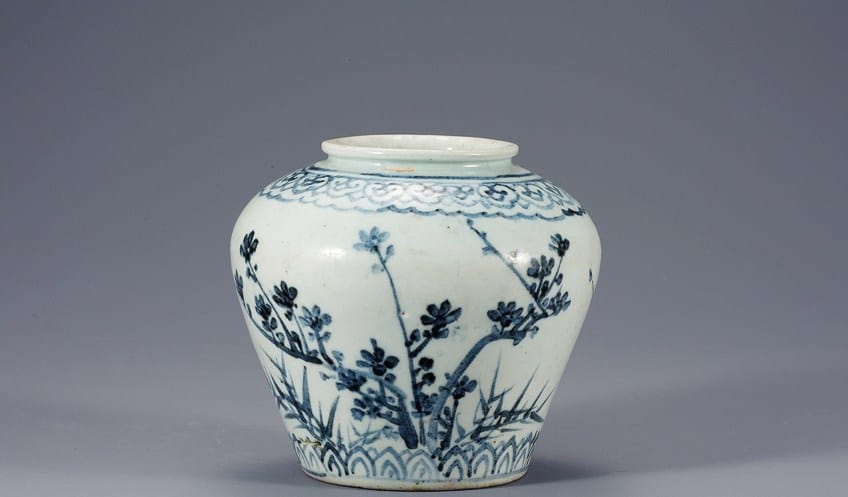
The Bronze Age, marked between 300 and 2000 BC, saw more imported items coming into the peninsula and surrounding areas. The turn of the seventh century also saw the establishment of an indigenous bronze culture and the mass production of weapons such as spearheads and swords as well as ritual items such as bells and mirrors. The sixth century gave rise to iron-rich pottery made with red clay in addition to comma-shaped beads called kokkok, often found in dolmen burial sites. It is believed that kokkok were carved to mimic the appearance of bear claws, which is another sign of the influence of Siberian art.
The Chinese iron culture arrived in Korea between the 5th and 4th centuries and is believed to have been sparked by interactions with the North Eastern Chinese state called Yanand, which developed via the Lelang Commandery.
Korea was known to import Chinese technology and adapt it to create new technologies. The emergence of the Chinese iron culture is therefore said to have played a major role in the development of Korea during the Iron Age. With the new technology and developments, Korea created a new type of iron casting technology and by 300 BC, iron was popular. A few examples of early Korean sculptural works can be seen below.
Bronze Ritual Object With Farming Scenes (5th – 4th Century BC)
| Artist | Unknown |
| Date | 5th – 4th century BC |
| Medium | Bronze |
| Dimensions (cm) | 12.8 |
| Site of Discovery | Daejeon, South Korea |
| Where It Is Housed | National Museum of Korea, Seoul, South Korea |
The majority of ancient Korean crafts that featured designs and patterns are associated with ritual objects for use in specific ceremonial rites. Common patterns include lines and dots used to represent celestial objects such as stars and the sun or other naturally occurring weather events, which were once both worshiped and feared. This bronze artifact is considered particularly rare since it depicted multiple realistic scenes containing farming sites. The bottom half of the object appears missing and the top features six square-shaped holes that display signs of the object’s function, which is hanging.
The object also has a decorated frame with incised lines and dots around the perimeter and down the middle of the panel to divide the scenes.
One of the clearest scenes represented on the object is of a naked man wearing a feather in his hair and is seen plowing a field as another individual is holding a hoe. On the left side of the panel, one can observe another individual putting something inside a vessel. These scenes are believed to represent the transition of farming activities captured from spring (planting the fields) to autumn (storage of the harvest).
The reverse side of the panel also contains animal imagery of a bird perched on a tree. Back then, birds were seen as “sacred mediators” that connected the shamans with the Gods and helped bring about peace and abundance to villages. Ancient villages also had images or figures of birds mounted on guardian poles called sotdae, which served to invite prosperity and peace. Birds are also featured in bronze artifacts and even bird-shaped vessels with bird imagery at different burial and ritual sites.
The object being crafted out of bronze was also part of an arduous process involving the smelting of copper ores with other alloys like zinc, lead, and tin, and casting the object from a mold.
Bronze was also affiliated with symbols of authority or with sacred ritual connotations, most often owned by members of the elite. It is also believed that this bronze artifact was either worn or used by a regional leader during rites held in prayer for the annual harvest. Farming during the Neolithic age was therefore of the utmost importance to ancient Korean civilization well into the Bronze Age. A few discoveries at Bronze Age sites have yielded pottery and traces of field systems that bear a resemblance to the markings found on this object. Researchers believe that the markings resemble a Bronze Age site found in Daepyeong-ri, Jinju.
Jar (4th Century BC)
| Artist | Unknown |
| Date | 4th century BC |
| Medium | Burnished red earthenware |
| Dimensions (cm) | 14.6 x 16.5 x 8.3 |
| Site of Discovery | Unknown |
| Where It Is Housed | The Metropolitan Museum of Art, New York |
This fourth-century red vessel is derived from the Early Bronze Age and is a common type of vessel found in tombs and associated with funerary rites. The bright red color of the vessel is said to have come from an iron-oxide pigment that was layered on the vessel and then burnished before firing.
The Bronze era in Korea commenced around the 15th century and was marked by the presence of mumun pottery, stone, and wooden tools. This period also saw the rise of social classes and the first Korean nation of Gojoseon.
Gojoseon was at its peak in the northwest region of the Korean peninsula and was recognized as an incredibly powerful nation that challenged the great Yan, Qin, and Han Chinese Dynasties. By 108 BC, Gojoseon collapsed due to conflict that brought about internal difficulties.
Many red burnished vessels and bowls were associated with the northeast region of the peninsula and vessels with rounded bottoms were often derived from central and southern sites.
Seogamni Gold Buckle of Pyeongyang (c. 108 BC)
| Artist | Unknown |
| Date | c. 108 BC |
| Medium | Gold, turquoise |
| Dimensions (cm) | 9.4 |
| Site of Discovery | Seogam-ri, Pyeongyang |
| Where It Is Housed | National Museum of Korea, Seoul, South Korea |
Following the fall of the Gojoseon nation, the Korean Peninsula scattered into multiple divisions: Buyeo, Goguryeo, Okjeo, Dongye, and Samhan (made up of three confederacies also called the three Han: Mahan, Jinhan, Byeonhan). Each civilization developed according to their levels of power and resources and with time, Goguryeo and Buyeo became large enough to become states and established their assertiveness in terms of culture and war, which resulted in several conflicts. In the end, Mahan, Jinhan, and Byeonhan combined to form Baekje, Silla, and Gaya, while Goguryeo overpowered Okjeo and Dongye.
The gold buckle piece above is a famous Korean artifact affiliated with the Lelang Commandery around 108 BC.
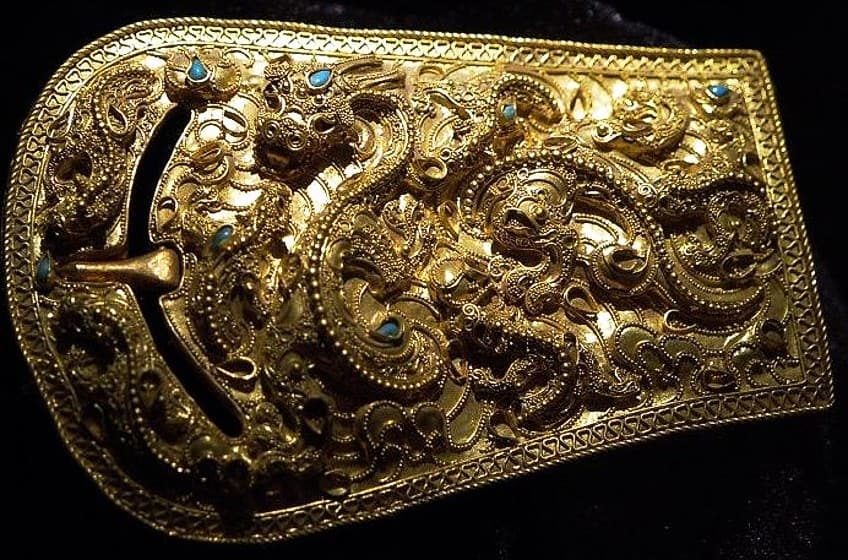
The design on the buckle depicts several dragons, intricately carved and soldered onto a thin gold plate with turquoise stones for decoration. Initially, there were 41 pieces of turquoise attached. Now, only seven remain. Today, traditional Korean pottery is one of the most highly praised art forms that garners the attention of many international collectors. Pottery from ancient Korea was characterized by three types; Blue-green celadon (cheong-ja) or stoneware from Goryeo, slip-coated celadon (bunjang-hoecheong), and white porcelain (Joseon baekja).
Celadon pottery is defined by its trademark jade-blue hue produced via a uniquely Korean inlay method for decoration. Two dominant artists working in this art form during the Goryeo era were Buan of Jeollabuk-do and Gangjin of Jeollanam-do.
Calligraphy and Painting
Calligraphy also emerged in light of the influence of Chinese art forms and Korea began producing its unique styles of calligraphy. One of the great masters of calligraphy, Kim Jeong-hui, is recognized for the classic Chusa style (“Chusa” being his pen name) and produced many famous calligraphy artworks that are still admired for their elements of Modernism.
Around 372 AD, Buddhism entered Goguryeo via the Buddhist missionaries (now recognized as the northern section of modern Korea and central and southern regions of Manchuria).
The spread of Buddhism led to an increase in the number of commissions for artwork dedicated to the belief and included murals in tombs depicting scenes from ancient Korean life. Ancient Korean paintings were a major part of Korean funerary practices and are often discovered at tomb sites. The best examples of ancient paintings can be found in the tomb murals made by the artists of Goryeo between the years 918 and 1392. The art of this period was very much influenced by Chinese culture and spread throughout other Asian countries like Japan.

Minhwa is also another form of traditional Korean painting that often features both animals and flowers as well as the 10 symbols of longevity. Elite members of the Joseon period also enjoyed art that captured the idealized version of local landscapes and focused primarily on the symbolism behind plants and included the four noble lords (orchid, bamboo, chrysanthemum, and plum plants), the 10 creatures of longevity, and animals like the tiger, crane, and deer.
The 18th century gave rise to Korea’s two best artists, Sin Yun-bok and Kim Hong-do. These two artists produced artwork that displayed the everyday life of Korean people.
Sin Yun-bok focused on erotic and voyeuristic scenes while Kim Hong-do delivered scenes of different people in common situations, which offered a valuable insight into the life and pleasure of ancient Korean people. The complex of the Koguryo Tombs is now known as a UNESCO World Heritage Site and contains many mural paintings that have also influenced other kingdoms. The early Korean paintings hold much insight into the first ancient Korean depictions of the landscape, important figures, and the significance of Buddhism in the peninsula. Below are a few examples of Korean paintings from ancient Korea.
Fragment of a Mural Featuring a Horse Rider (57 – 668 AD)
| Artist | Unknown |
| Date | c. 57 – 668 AD |
| Period | Goguryeo Kingdom |
| Medium | Pigment on stone |
| Dimensions (cm) | 44 (h) |
| Where It Is Housed | National Museum of Korea, Seoul, South Korea |
This ancient Korean painting illustrates a horse rider, which originally formed part of a mural that was created on the plaster of the entrance wall leading into one of Goguryeo’s mural tombs, the Ssangyeongchong tomb. Ssangyeongchong tomb is situated in Yonggang-eup, Nampo in North Korea. The tomb was made up of two chambers and an entrance corridor that led into the front room. Following this, there was a connecting corridor that led to the burial chamber.
The burial chamber was plastered and decorated with many paintings of ancient Korean life and a depiction of the four guardian deities.

Early Korean wall paintings were created in the fresco manner, with paints combined with water and applied to a wet surface of lime plastered on stone. While there is no clear date for the fragment, the piece is believed to have come from the Goguryeo period, which began around 57 BC. The walls of the Ssangyeongchong tomb were once adorned with stunning imagery of people on horses with chariots and musicians with their instruments, but this has long disappeared and what remains is this fragment.
The fragment does, however, provide historians with insight into the kind of horse tack that people of this era used and what they wore.
It depicts a warrior on a horse with a cap decorated with a feather. In 1913, the tomb was searched by the Japanese and it is believed that this piece was still intact on the wall back then. Somehow, the fragment of the wall painting ended up in the hands of the Joseon government General Museum and thereafter in the National Museum of Korea.
Ssireum (Korean Wrestling) (18th Century) by Kim Hong-Do (Danwon)
| Artist | Kim Hong-Do (Danwon) (1745 – 1806) |
| Date | 18th century |
| Period | Joseon Period |
| Medium | Painting on paper |
| Dimensions (cm) | 26.9 x 22.2 |
| Where It Is Housed | National Museum of Korea, Seoul, South Korea |
Ssireum refers to the traditional art of Korean wrestling and is depicted in this famous Joseon period painting by Kim Hong-Do, who went by the pen name Danwon. The scene illustrates two wrestlers surrounded by spectators divided into opposing sides; one on the upper and lower portions of the painting. Towards the left, one can see a toffee vendor that is portrayed outside the spectator’s gaze and serves as a key figure in bringing together the circular composition of the painting.
This masterpiece is also admired for its incredible brushwork, which beautifully captured the facial expressions of the spectators amidst the heated fight.
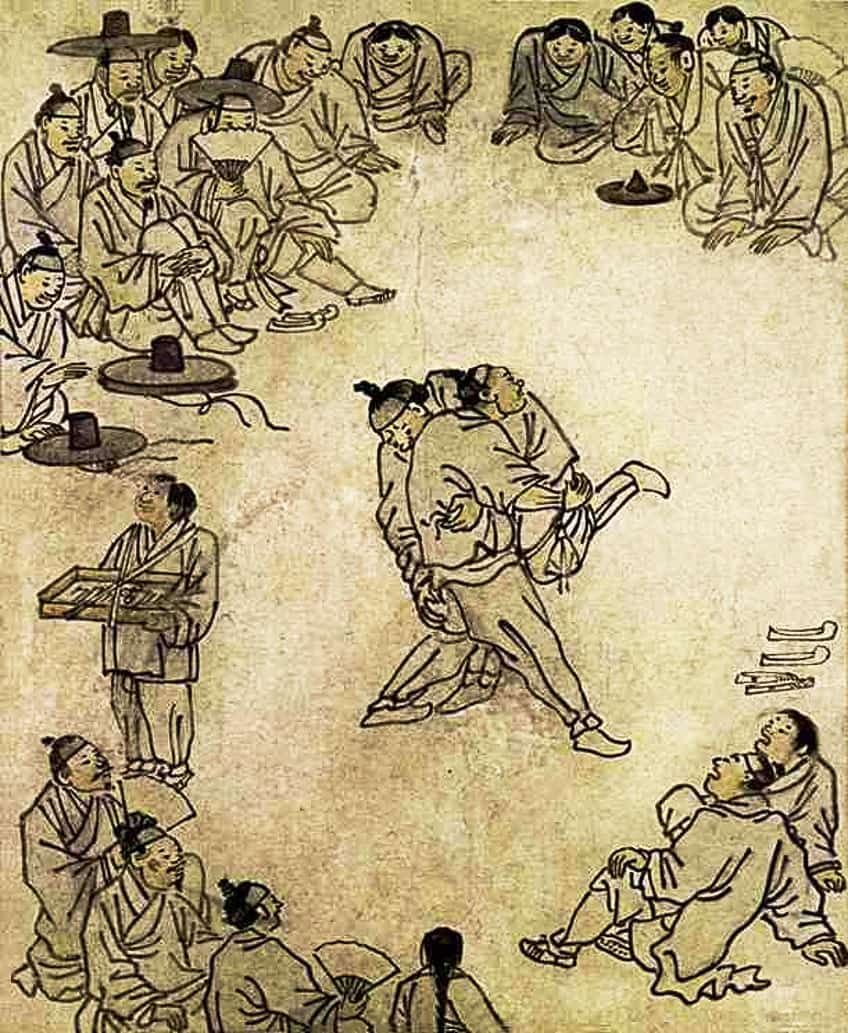
Portrait of Yi Chae (1892) From the Joseon Dynasty
| Artist | Unknown |
| Date | 1892 |
| Period | Joseon Dynasty |
| Medium | Ink and colors on silk; hanging scroll |
| Dimensions (cm) | 97.8 x 56.3 |
| Where It Is Housed | National Museum of Korea, Seoul, South Korea |
This is one of the most famous portraits from the Joseon dynasty and one of the earliest paintings from the South Korean art scene. The Joseon dynasty provided some of the best references to Korean painting and is known as “the golden age of Korean painting”. Created by an unknown artist around 1892, this portrait depicts a scholar-official by the informal name of Gyeryang, formally known as Yi Chae (1745 – 1820), who dedicated his life in service to three different kings of the Joseon era (Kings: Yeongjo, Jeongjo, and Sunjo).
The painting shows the 57-year-old Gyeryang seated and gazing directly at the viewer. He is also wearing a white scholar garment with dark trimmings and a horse-hair scholar hat called a Dongpo hat.
The painting’s inscription makes mention of the hat being referred to as a cheng-zi hat. The attire of the sitter matches the attire of Korean Confucian scholars who were typically dressed in a white robe with black collars and white belts with black borders. Gyeryang’s grandfather, Yi Jae, was also a popular Confucian scholar who had a great influence over the political and ritual studies of his time.

Gyeryang’s choice to carry the tradition of a Confucian scholar is evident in his choice of attire and shows his pride in his heritage and the legacy of his grandfather. The painting also has additional inscriptions, as is characteristic of East Asian paintings, to provide more information on the meaning of the work while increasing the visual aesthetic of the work. The inscriptions are also from the sitter’s friends and describe Yi Chae as a man of integrity and clarity. The direct frontal positioning of Yi Chae is a rare occurrence in Joseon painting and aids in conveying the sitter’s personality.
The rendering of the sitter’s facial features and hair were also executed with meticulous detail and much care was given to capturing Yi Chae’s birthmarks, a distinct scar on his nose, and even a mole on the inside of his ear.
This is indeed one of the Joseon era’s finest portraits. Some major painters from the Korean golden age include portraitist Yun Duseo, literati painter Jeong Seon, and Jang Seung-eop. Another art form born of the Joseon dynasty was known as Chaekgeori and was a type of still-life painting that thrived towards the end of the 18th century and well into the early 20th century. The focal subject of Chaekgeori art was that of books, which gives us information on the culture of learning and Korean culture’s infatuation with books.
Modern Korean Art
Popular modern Korean art spans multiple forms of media and includes Korean artists based overseas and in Korea. Below, we will explore some of the most famous Korean artworks and their artists about Contemporary Korean art and its development into aesthetics informed by the “Modern”.
Seund Ja Rhee (1918 – 2009)
Seund Ja Rhee was an incredible draftswoman, illustrator, and South Korean painter who specialized in the creation of mosaics and tapestries. Having participated in over 300 group shows and hosting 84 solo exhibitions, Seund Ja Rhee is recognized as one of the best South Korean painters in art history.
In 1991, she was elected as the Chevalier of the French Ordre des Arts et des Lettres and has since produced some of the most expressive and abstract paintings.
Road to the Antipode (1990)
| Artist | Seund Ja Rhee (1918 – 2009) |
| Date | 1990 |
| Medium | Acrylic on canvas |
| Dimensions (cm) | 150 x 150 |
| Where It Is Housed | Rhee Seund Ja Jinju Museum of Art, Jinju, South Korea |
Road to the Antipode is part of a series of acrylic paintings by Seund Ja Rhee that is described by Michael Butor as blue landscapes that connect the art of the East with that of the West. The color blue from this painting and many others is significant to the artist as it had come to represent a mother figure, a legend, and “the water of life that begets a new world”.
Seund Ja Rhee integrated her experience in French abstraction with her knowledge of Korean literati paintings and created poetic works.
These were displayed in many exhibitions by the National Museum of Contemporary Art in Korea. Through her memory, experiences between France and Korea, and exploration of color, Seund Ja Rhee elegantly portrayed her view of Mother Earth and the expanse of the universe.
Kim Tschang-Yeul (1929 – 2021)
Kim Tschang-yeul was a Contemporary Korean painter who was admired for his water droplet motif in painting that draws from Eastern philosophy and acts as a therapeutic practice. Kim served in the Korean War (1950-1953), which informed his experiences and their translation into his artwork. His paintings of water droplets also serve as a therapeutic and meditative gesture for dealing with the trauma of his experiences. He also co-founded the Contemporary Artists’ Association in 1957 and joined hands with the Korean Art Informel movement of the 1950s.
Kim gained additional exposure to international movements from his studies and travels to Paris and New York.
Waterdrops (1990)
| Artist | Kim Tschang-yeul (1929 – 2021) |
| Date | 1990 |
| Medium | Oil, tinfix, and acrylic on canvas |
| Dimensions (cm) | 55 x 45 |
| Where It Is Housed | Tina Kim Gallery, New York |
Kim’s inquiry into the nature and appearance of liquids traverses the boundaries of representation and abstraction. According to Kim, his water droplet paintings were “accomplished under the encounters of his life experiences and his plasticizing experiences”.
He further stated that each water droplet was “in its initial state since purification, as if it is a recurrence of absolute nothingness” and that it (the water droplet) “is also what it finally returns to”.
The Art Informel movement is also referred to as Informalism and emerged between 1943 and 1950 as a pictorial movement that was defined by abstraction and gestural qualities found in Europe during the Second World War. This movement can be compared to the 1946 American Abstract Expressionist movement. Other trends of the movement included matter painting, art brut, lyrical abstraction, and tachism.
Nam June Paik (1932 – 2006)
Born in a Japanese-Empire-run Korea (1910 – 1945) in Seoul, Nam June Paik is considered one of the most famous Contemporary American-Korean artists. Nam June worked predominantly in mixed media and is revered as the founder of video art. You may have heard of the term “electronic superhighway”, which was the term first used and invented by the artist in 1974. Nam June received an elite education and was trained as a classical pianist from a young age.
The onset of the Korean War caused the artist and his family to flee to Hong Kong and then Japan, where Nam June graduated from the University of Tokyo with a BA in Aesthetics.
Electronic Superhighway: Continental U.S., Alaska, Hawaii (1995)
| Artist | Nam June Paik (1932 – 2006) |
| Date | 1995 |
| Medium | 51-channel video installation; custom electronics, neon lights, wood, steel, sound, and color with one closed-circuit TV feed. |
| Dimensions (cm) | 1219.2 x 457.2 |
| Where It Is Housed | Smithsonian American Art Museum, Washington D.C. |
Nam June was also a member of the Fluxus art movement, which was an experimental global movement made up of artists, composers, and designers of the 60s and 70s. By the 60s, Nam June moved to New York and only returned to South Korea in the 80s. Electronic Superhighway: Continental U.S., Alaska, Hawaii (1995) is a video installation artwork currently housed at the Smithsonian American Art Museum and features the different states defined by bright neon lights that also link the states via “superhighways”.
The highways are significant as they highlight their function of transporting people and goods but with the neon lights, they allude to a different kind of transportation – electronic communication.
The use of television screens, which were popular in the 90s, and internet cables also suggest the transportation of information via light, accessible at any moment or place. Nam June’s installation was a crucial turning point for video art and the thinking around information dissemination and the socio-political landscape of America in the 50s and 60s.
The art of the once chaotic Korean peninsula has evolved rapidly and has inspired many artists of the West. Whether it is the ancient art forms of traditional Korean art or South Korean art, the abundance of creativity, depth, culture, and historical influence is rife. Hopefully, you have been inspired enough to start planning your trip to South Korea and witnessing some of these incredible artworks in person.
Take a look at our traditional Korean art webstory here!
Frequently Asked Questions
What Are the Common Motifs in Korean Art?
Common motifs found in Korean art include imagery of the tiger, the 10 symbols of longevity, the sun, water, mountains, clouds, crane, turtles, the mushroom of immortality, pine, and deer. While some motifs can be found in singular scenes, others are depicted separately in folk paintings.
What Is Minhwa?
Minhwa refers to Korean folk paintings that are characterized as being created by artists without proper training, common, or unknown individuals of society. Minhwa paintings feature different symbolic motifs, including the tiger, various animals, and plants. Minhwa paintings are often used for decorative purposes. As the genre progressed, it represented a combination of Buddhist, shamanistic, Confucianist, and Taoist ideals.
What Is the Most Famous Korean Painting?
The most famous Korean painting is considered to be Inwang Jesaekdo (1751) by Jeong Seon (1676 – 1759), who was a popular Korean landscape artist.
Jordan Anthony is a Cape Town-based film photographer, curator, and arts writer. She holds a Bachelor of Art in Fine Arts from the University of the Witwatersrand, Johannesburg, where she explored themes like healing, identity, dreams, and intuitive creation in her Contemporary art practice. Jordan has collaborated with various local art institutions, including the KZNSA Gallery in Durban, the Turbine Art Fair, and the Wits Art Museum. Her photography focuses on abstract color manipulations, portraiture, candid shots, and urban landscapes. She’s intrigued by philosophy, memory, and esotericism, drawing inspiration from Surrealism, Fluxus, and ancient civilizations, as well as childhood influences and found objects. Jordan is working for artfilemagazine since 2022 and writes blog posts about art history and photography.
Learn more about Jordan Anthony and about us.
Cite this Article
Jordan, Anthony, “Korean Art – Exploring the History of Traditional Korean Art.” artfilemagazine – Your Online Art Source. November 8, 2022. URL: https://artfilemagazine.com/korean-art/
Anthony, J. (2022, 8 November). Korean Art – Exploring the History of Traditional Korean Art. artfilemagazine – Your Online Art Source. https://artfilemagazine.com/korean-art/
Anthony, Jordan. “Korean Art – Exploring the History of Traditional Korean Art.” artfilemagazine – Your Online Art Source, November 8, 2022. https://artfilemagazine.com/korean-art/.


